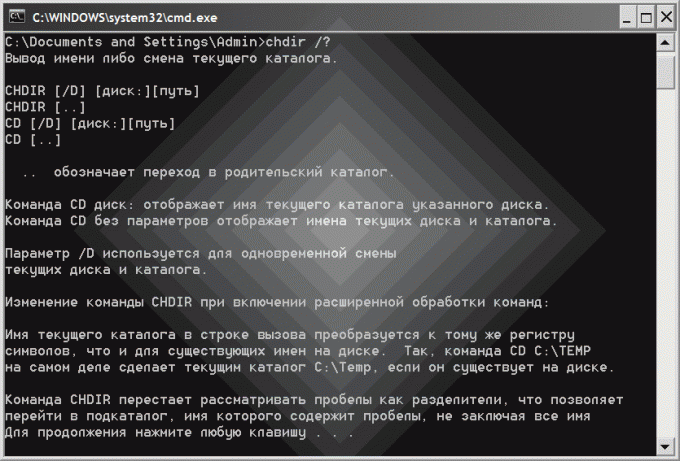Instruction
1
Use the cd command to change to another operating system drive. CD is the abbreviated spelling of chdir (CHange DIRectory - Change directory"). The syntax of DOS allows you to use both options - cd and chdir. A full description of this command directly in terminal by running it with the modifier /?:
chdir /?
chdir /?
2
Add modifier /d to the command chdir (or cd) to switch from the current storage device to another physical or virtual disk. For example, if you change to drive F, then type and execute the following command:
chdir /d F:
chdir /d F:
3
Use a backslash (\) as a command parameter, chdir, to change from any directory of the current drive in its root:
chdir \
chdir \
4
Specify in addition to the modifier /d full path from the root of the drive, if you need to switch to a particular directory contained on it. For example, to navigate to the folder with the name of SubFilder placed on the disk F is inside the directory MainFolder, it is necessary to enter and execute the following command:
chdir /d F:\MainFolder\SubFilder
chdir /d F:\MainFolder\SubFilder
5
To enter over and over again long paths to folders quite uncomfortable. The terminal interface command prompt does not allow to select and copy the typed one way, but the paste command is copied into it. You can use an auxiliary tool such as Windows Explorer. Revealing the desired folder, select and copy the address bar the full path (CTRL + C). Then switch to the terminal command prompt, right click mouse and select the context menu item "Paste".
6
Enclose the full path to the folder in quotes if it contains spaces in the names directory. For example:
chdir /d "F:\Program Files\msn gaming zone"
Quotation marks are not always needed - only if the operating system is activated so called "command extensions".
chdir /d "F:\Program Files\msn gaming zone"
Quotation marks are not always needed - only if the operating system is activated so called "command extensions".
7
Disable command extensions, if you want to enter the full path without quotes when you switch to another drive:
cmd e:off
cmd e:off
